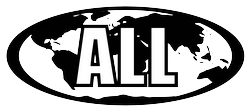
6-DVD set of the following documentaries about the Holocaust
.
DACHAU, SACHSENHAUSEN
RAVENSBRUCK, BUCHENWALD
This DVD tells the story of four notorious concentration camps set up on German soil: Dachau (Bavaria); Sachsenhausen (Brandenburg); Ravensbruck (Brandenburg); and Buchenwald (Thuringen). This DVD traces the history of the camps; tells us about the leading personalities who ran them; and discusses the liberation and postwar trials associated with them. Most of the films come from original sources (NOTE: in some cases, the quality of the films are not very good. We have tried our best to digitally enhance the quality, where possible). Please note that there are some very graphic scenes throughout the DVD and sensitive viewers should be prepared.
IN ENGLISH. TOTAL RUNNING TIME: 150 MINS.
.
MAJDANEK AND AUSCHWITZ
This DVD tells the story of the two most "efficient" and terrifying extermination camps, which the Germans set up in the East: Majdanek, located in the Generalgouvernement and Auschwitz, located in German Silesia. Between these two camps alone, it is estimated that almost 3,000,000 people were exterminated by the German fascists and their helpers. This DVD traces the history of the camps; tells us about the leading personalities who ran them; and discusses the liberation and postwar trials associated with them. Most of the films come from original sources (NOTE: in the Majdanek film especially, the quality of the films are not very good. We have tried our best to digitally enhance the quality, where possible). Please note that there are some very graphic scenes throughout the DVD and sensitive viewers should be prepared.
IN ENGLISH. TOTAL RUNNING TIME: 114 MINS.
.
THE HOLOCAUST STORY: 1933 - 1945
By the time the Germans were defeated at the hands of the Allies in May 1945 at the end of the Second World War, almost six million Jews from over 30 nations had been exterminated through hunger, disease, mass shootings and poison gas, among other means. How did it come to pass? This film, using extensive film footage -- most photographed by the Nazis themselves -- tells the story of the persecution and eventual destruction of the Jews during the years of the Third Reich. Some parts of the footage will be easily recognized from its usage in other documentaries; the difference here, however, is the expanded use of that coverage, showing scenes that have not been shown in depth before. Be advised, that quite a bit of it is very graphic and disturbing. Even for those with a strong background in Holocaust studies, there is film footage of interest here. Overall, the quality is very good. This film can serve as both a primer on the subject and a supplement for the historian interested in the topic.
ATROCITIES IN THE RUSSIAN CAMPAIGN, 1941 - 1942: This short film details a few of the massacres carried out by the NKVD against Ukrainian locals and German POWs in Russia during the opening years of Operation Barbarossa. While this ten-minute clip was originally meant to serve as an apologetic for German crimes in the Ukraine and Russia, the very first part of this short piece details the German "liberation" of Brygidki Prison in Lwów in June 1941, which actually details the opening phase of the pogrom against the city's Jews shortly thereafter (though it's highly doubtful that's what the modern-day compiler of the film intended to convey).
Immediately after entering Lwów (Lviv; Lvov'), the city inhabitants ran to the three main prisons in the hopes of finding their relatives. The Germans threw open the gates of the prison and the scale of NKVD massacres conducted by the retreating Soviets were revealed. A report drafted by a judge placed the blame solely on the city's Jews, who were seen as being overall sympathetic to the Soviet occupiers. In fact, given both Polish and Ukrainian anti-Semitism prior to the Soviet takeover of the city in 1939, many Jews did indeed support the Communists in the hopes they would obtain equality in society and also because where the Soviets went, the Germans didn't. A brief occupation of Lwów in 1939 by German soldiers, who carried out small-scale murders and abuse of the Jews, convinced the local Jewish population, that their protection lay solely in the Soviet occupation forces, which entered the city soon thereafter as part of the territorial division of eastern Poland agreed to by the two occupiers shortly before. Unfortunately, this newfound "protection" not only led to a widespread support by the Jewish populace, but to a large number of Jews taking advantage of their elevated status to join the Soviet security and political forces. It wasn't long before the majority of Jews in occupied Ukraine withdrew their support of the occupiers and some of them even tried to smuggle themselves out of Ukraine and into the Generalgouvernment, despite warnings from the Germans themselves, that they would be murdered there.
Newly "liberated" by the Germans and falling back on old hatreds of the Jews and the belief, that the Jews supported the Soviets and were complicit in the murder of the prisoners by retreating NKVD forces in June 1941, Ukrainian nationalists had little problem instigating a popular pogrom against the city's Jews with the support of Einsatzgruppe C. That a significant number of the massacred prisoners were Jews was, to them, irrelevant. The opening of two other prisons on Łąckiego and Zamarstynowska Street only helped to fan the flames of hate.
The local Jews were first rounded up and forced to disinter those corpses, which had been buried in the prison courtyard after torture and execution. Then they had to remove the dead bodies, which had been left in cells, because the NKVD didn't have the time to bury them after hastily shooting them or throwing grenades into the locked cells before fleeing the advancing Germans. The NKVD attempted to set the prison on fire to destroy the evidence, but were, for the most part, unsuccessful. Among the tortured and executed was a priest by the name of Zynoviy Kovalyk, whom the NKVD arrested in December for the sermon he gave on the Feast of the Immaculate Conception (December 8). While they shot the rest of the prisoners, they decided to treat Kovalyk like his Lord by crucifying him in front of his fellow prisoners. According to witnesses, the most terrible sight was that of seeing the priest nailed to the prison wall. Even worse, someone had slit his belly open and placed a dead human fetus inside of it.
Shortly after this public humiliation of the city's Jews, some 7,000 of them were rounded up and shot by local Ukrainians in revenge for the prison killings. However, prior to that happening, a number of Jews were publicly beaten --- some with crowbars --- dragged by their hair through the streets, raped and cruelly taunted by the local populace, including underaged teenage boys. Lest one mistakenly believe that this was a one-time, mass hysteria caused by the sight of the massacred inmates, not three weeks later, the scene was repeated after a thorough orchestration by OUN nationalists with the blessing and help of the SS.
The opening part of this clip shows the city's Jews forced to exhume and stack massacred inmated on the prison grounds.
DVD-R IS IN ENGLISH. Approximately 82 minutes + 10 min. clip.
WARNING: SOME OF THE SCENES IN THIS DVD ARE VERY GRAPHIC AND DISTURBING.
.
THE LIBERATION OF AUSCHWITZ (1945)
The films taken by Soviet cameramen in January 1945 showing the liberation of the concentration / extermination camps at Auschwitz-Birkenau have been seen in "parts" in various documentaries, but rarely shown in whole and rarely with appropriateexplanatory narration. This 52-minute documentary not only shows the entire film as it was put together by frontline Soviet military photographers, but includes that explanatory information as well as interviews with the only surviving Russian cameraman alive today.
52 minutes. In English and German.
LE RETOUR (1945): In 1940 Henri Cartier-Bresson was taken prisoner by the Germans; escapes at his third attempt in February 1943. In 1945 he works as part of a team, photographs the Liberation of Paris and directs Le Retour (The Return), a documentary on the repatriation of prisoners of war and detainees. Le Retour is the story of the prisoners liberated from the Nazi concentration camps. This film footage of the expressions and reactions from prisoners at the time of their freedom is unforgettable. Included is the removal of the prisoners to temporary hospitals in Paris where they are reunited with family and friends. Also, an aerial view of bombed Germany which was presumed to be seen by the prisoners as they were being flown home.
32 minutes. In French with optional English subtitles. Approximately 84 minutes total.
.
THE THERESIENSTADT GHETTO
While most of the world was content in deluding themselves into believing that the deportation of the Jews "to the East" meant nothing more than their resettlement and utilization in labor camps by the Germans, some people still dared to say out loud that the Germans were practicing genocide against the deportees. Meant to quell these rumors and to aid in the smooth functioning of the deportation of the Jews, the Nazis set up a "model ghetto" in Terezin, north of Prague in the early 1940s. Its existence was meant to prove to the world that the Jews were being handled correctly and that the stories about atrocities were just Allied propaganda. But the so-called model ghetto in theProtektorat was a sham: in back alleys, out of sight of the very few visitors who were allowed to tour Theresienstadt, were the overcrowded and filthy barracks, which held the starving populace, waiting for their turn to be deported to the East ... and the gas chambers of the extermination camps in occupied Poland.
This DVD tells the story of Theresienstadt, containing rare footage, interviews and even pictures of the ghetto memorial as it looks like today.
WARNING: SOME OF THE SCENES IN THIS DVD ARE VERY GRAPHIC AND DISTURBING.
IN ENGLISH. Approximately 72 minutes.
.
BATTLE OF SAN PIETRO
& NAZI CONCENTRATION CAMPS
3 film DVD covers subjects related to the end of the war against Nazi Germany.
The Smashing of the Reich is an 83 minute film detailing the events which led to the downfall of the Reich in the West during 1944-45;
The Battle of San Pietro is s a 32-minute, 1945 documentary film directed by John Huston about the Battle of San Pietro Infine during World War II. The film is unflinching in its realism and was held up from being shown to the public by the United States Army. Huston quickly became unpopular with the Army, not only for the film but also for his response to the accusation that the film was anti-war. Huston responded that if he ever made a pro-war film, he should be shot. General George Marshall came to the film's defense, stating that because of the film's gritty realism, it would make a goodtraining film; subsequently the film was used for that purpose. Huston was no longer considered a pariah; he was decorated and made an honorary major;
Nazi Concentration Camps is a 1945 produced film, as well. It was put together by the US Army and it consists of one hour of graphic visual revelations about the liberated concentration camps, as they were found by the western Allies as they marched across a defeated Germany.
175 minutes long. IN ENGLISH.
.
TOTAL TIME: APPROX. 677 mins. (more than 11 hours).




